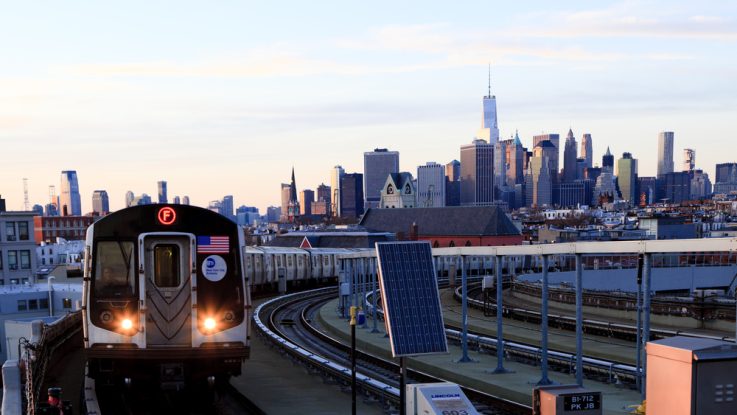
New York City’s Metropolitan Transportation Authority (MTA) recently released its Climate Resilience Roadmap that has the aim of strengthening the transit system’s ability to withstand future storms and other effects of climate change.
“Our transit systems are being directly impacted by climate change, from mudslides on the Hudson Line to flooding in our subways and busways,” New York Governor Kathy Hochul said. “The Climate Resiliency Roadmap is an essential component of making sure our critical infrastructure can withstand extreme weather events and keep New Yorkers moving safely.”
The Climate Resilience Roadmap consists of a Climate Vulnerability Assessment and 10 core climate resilience goals targeted to address the magnitude of climate threats facing the MTA’s infrastructure. These goals are:
- Goal 1: Shield subway stations and tunnels from stormwater;
- Goal 2: Protect subway yards from flooding;
- Goal 3: Protect open subway infrastructure from flooding;
- Goal 4: Safeguard bus depots from flooding;
- Goal 5: Manage floods on city streets;
- Goal 6: Mitigate Long Island Rail Road flooding;
- Goal 7: Reduce MetroNorth Railroad flooding;
- Goal 8: Expand underground air circulation and cooling;
- Goal 9: Protect outdoor infrastructure from heat; and
- Goal 10: Address heat and wind impacts on bridges.
The Roadmap also outlines a multi-pronged implementation framework that includes capital plan integration, resilient design practices, proactive operating actions, and better coordination between partner agencies.
“Transit is the antidote to climate change, which is why we have to preserve and improve New York’s amazing subway, bus and commuter rail systems. But our transit system is still vulnerable to the effects of climate change, so we need to execute on this visionary resiliency plan, which has been designed to ensure the reliability and safety of New York’s transit system for years to come, ” said MTA Chair and CEO Janno Lieber.